Physical Address
304 North Cardinal St.
Dorchester Center, MA 02124
Physical Address
304 North Cardinal St.
Dorchester Center, MA 02124
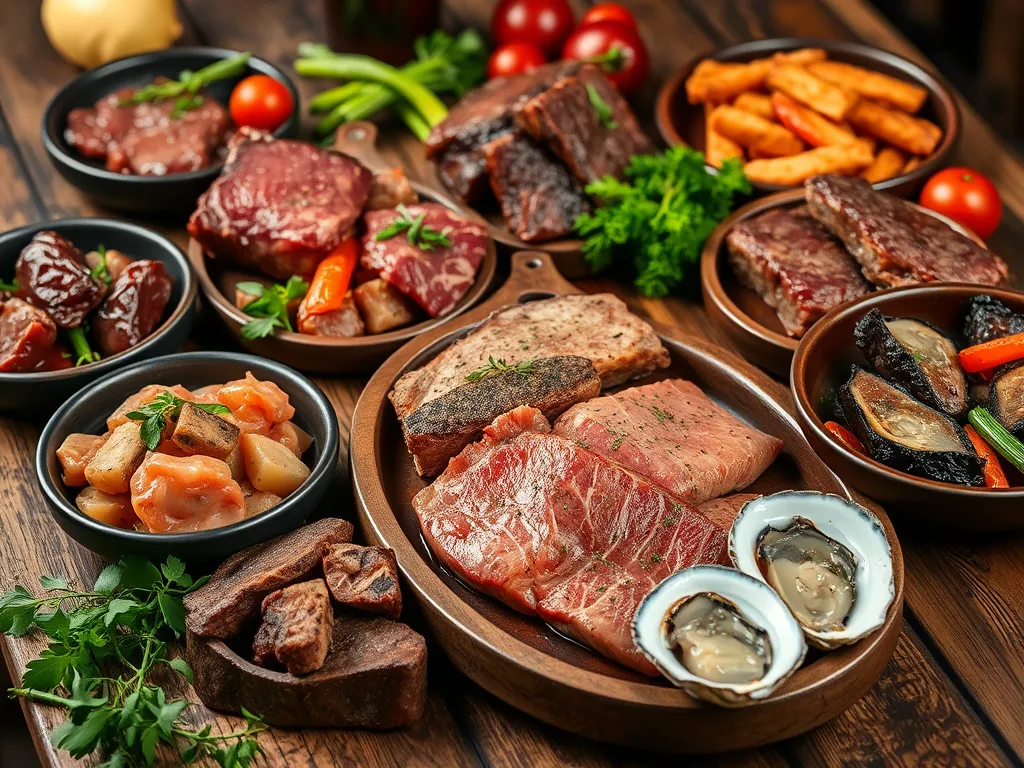
Meat provides vital nutrients like B12, heme iron, zinc, and omega-3 fatty acids (EPA/DHA), which are harder to obtain from plants. These support brain health, energy, and immunity. Missing meat may require careful supplementation to avoid deficiencies, especially in B12 and essential fats. Are you covering your nutritional bases?
Meat is, and has always been, an important food source for humans. It is packed with the needed protein, iron, vitamin B, and other vital nutrients that are essential for the human body.
While I’m not a big fan of extreme diets like the carnivore or keto diet, diets high in meat tend to do a little better than just plant-based diets. This is thanks to the balance between macro- and micronutrients in meat.
In today’s blog, we’ll discover the 10 essential nutrients that can be found ONLY from meat. So for all the vegans out there; you might want to skip this one.
Oh, and before I forget. The upcoming nutrients are only found in meat in significant amounts.
1/2 cup of tempeh contains 0.1mg of vitamin B12 for example, but that’s not what I call a significant amount.
One of the most essential vitamins in meat is vitamin B, and vitamin B12 in particular. Vitamin B12 is mostly found in lean meats, suchs as beef liver, clams, oysters, salmon, tuna, etc.
The recommended amount of vitamin B12 are the following:
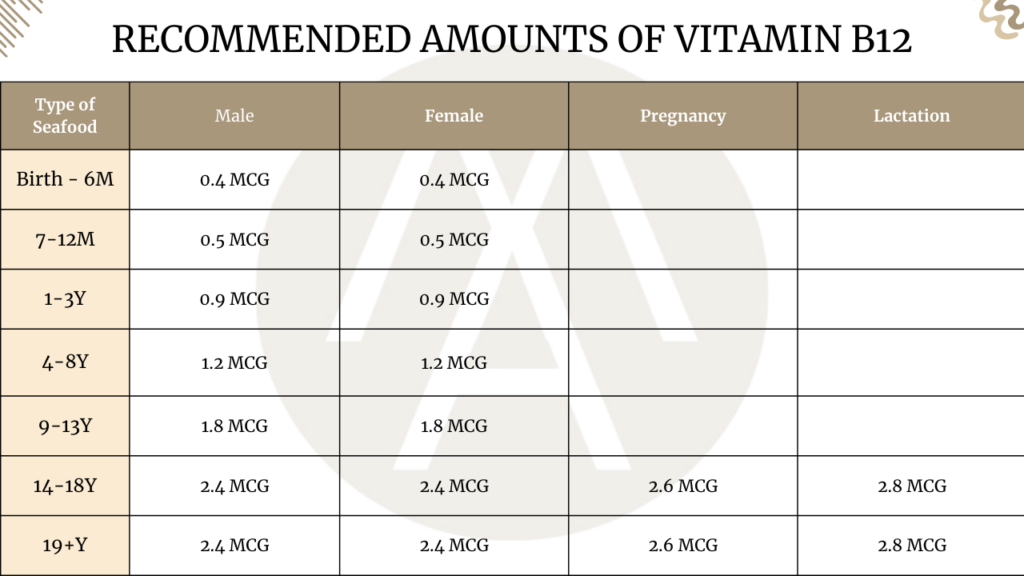
Vitamin B12 is essential for nerve health. In simple terms it forms a coat around your nerves, just like the isolation of electrical wires. In doing so, the communication between the brain and body goes flawless.
Also, vitamin B12 is ideal for the creation of red blood cells. Red blood cells transport oxygen throughout the whole body. A deficiency of red blood cells make you feel weak and tired.
Besides that, vitamin B12 is also essential for:
Bioavailability is the term for how well the vitamin B12 is taken into the body. There are 4 ways to absorb vitamin B12:
Carrots are high in vitamin A, rabbits eat carrots, and rabbits have great eyes? A bit shortsighted, but the underlying principle is right. Carrots do contain vitamin A, but nearly not as much as beef liver for example.
As previously stated; beef liver is high in vitamin A. But beef liver isn’t the only source that’s extremely high in vitamin A.
These are the other ones (retinol per 100g):
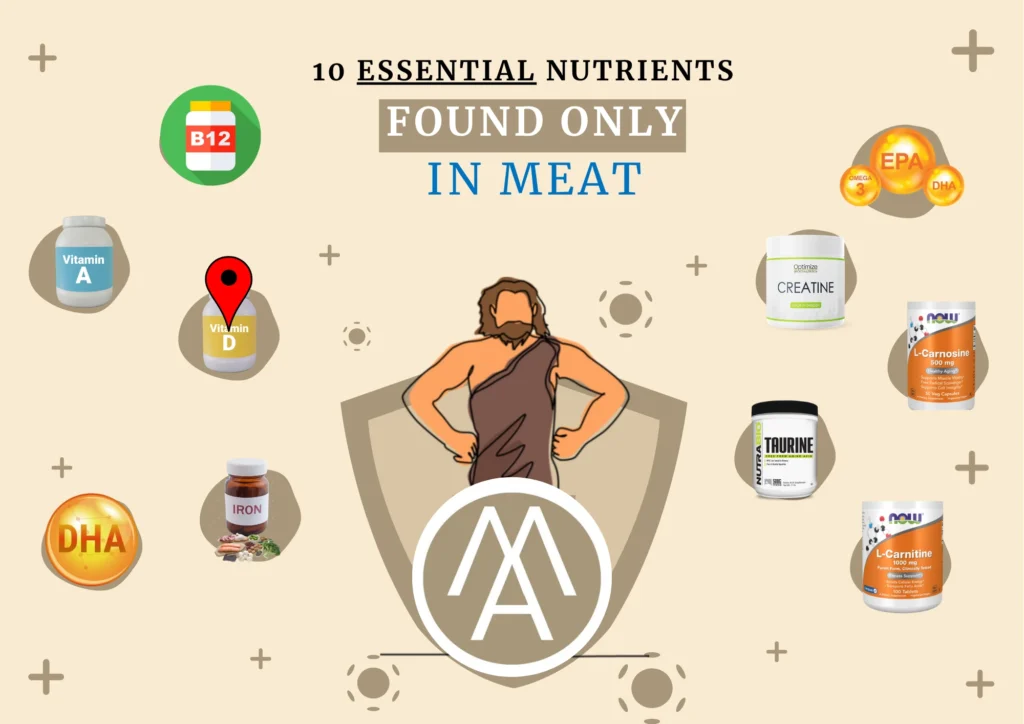
If you know me, you know I love my vitamin D. I live in the Netherlands, meaning sunlight (natural vitamin D3) is very rare. Vitamin D3 is hard to find in foods, but if you want to get it from nutrition, meat is your best bet.
Vitamin D3 is essential for immune & bone health, although most people think it’s a cure for depression. This myth has come from the fact that sunshine is a natural mood enhancer, not the vitamin D3 itself.
Sun provides us with the best, most natural source of vitamin D3. Fatty fish is the source that’s the highest in vitamin D3 out there.
Quite a difference, right?
More on the benefits of vitamin D can be found in my blog on vitamin D!
Heme iron is the form of iron that the body absorbs the best. Approximately 30% of all the heme iron you consume is absorbed by the body. Heme iron plays a crucial role in transporting oxygen through the body. Without enough of it, there wouldn’t be enough red blood cells to transport oxygen from the lungs to the rest of your body.
So why is it in this list?
Heme iron is found only in animal-based products, whereas non-heme iron can be found in plant-based products. These include fruits, vegetables, and nuts. While these are still important, only 2-10% of the non-heme iron you consume is absorbed by the human body.
Vitamin C can also help in the absorption of non-heme iron.
While heme iron is a more efficient form of iron, a higher intake of heme iron is also associated with inflammation, oxidative stress, and a higher risks of chronic diseases. These include cancer, heart disease, and diabetes.
In digestion, heme iron is also not the best for the gut. It can damage the gut lining.
While heme iron is a more efficient form of iron, moderation and balance is key.
DHA (DocosaHexaenoic Acid), better knows as omega-3, is an essential fatty acid for brain function & health. Deficiencies in DHA are also common in people who face difficulty learning new things. Especially fatty fish like salmon, mackarel, tuna, etc. are high in DHA, but it can also be found in various kinds of meat.
Grass-fed lamb contains the most amount of DHA per serving (100-200mg of DHA), but this is not much compared to the concentration in Atlantic salmon (1,500mg of DHA per 100g).
When it comes to omega-3 fatty acids, not all sources are created equal. DHA (DocosaHexaenoic Acid), primarily found in animal-based foods like fatty fish, is the most bioavailable form and directly supports brain health, cognitive function, and neural development.
On the other hand, ALA (Alpha-Linolenic Acid), found in plant-based sources like flaxseeds, walnuts, and chia seeds, serves as a precursor to DHA. The problem? The human body converts ALA into DHA at a highly inefficient rate—only about 0.5-5%.
While ALA still offers general anti-inflammatory benefits, relying on it alone for DHA won’t get you far.
To put it simply, plants may provide omega-3s, but they can’t match the potency or efficiency of DHA-rich animal-based sources like salmon, mackerel, and tuna.
The last one of the omega 3 fatty acids found in meat, is EPA. EPA, or Eicosapentaenoic Acid, functions as a inflammation battler. Its primary function is producing eicasanoids, which are chemicals that combat inflammation.
EPA can be converted into DHA within the liver and cannot be produced by the body on its own, meaning we need to consume it mostly via fatty fish and fish oil.
Besides battling inflammation and promoting heart health, higher EPA levels are also associated with better cognition, mood benefits, and reduced chance of skin cancer.
Nearly 200,000 Americans are diagnosed with melanoma each year. Melanoma is the deadliest type of skin cancer people can develop. A higher EPA intake has been found to reduce the risks of developing malignant melanoma by up to 80%.
EPA has been shown to reduce cardiovascular events like heart attacks and strokes. A Harvard study highlighted the benefits of purified EPA in reducing blood triglyceride levels and lowering the risk of serious cardiovascular outcomes, including heart attacks, strokes, and the need for further procedures.
The evidence, particularly from the REDUCE-IT trial, underlines the effectiveness of EPA-based therapies like Vascepa, which received FDA approval for reducing cardiovascular risks in high-risk patients.
Significant EPA intake from fatty fish or fish oil is essential for reducing risks of cardiovascular disease.
If you’re familiar with fitness, you’re familiar with this one. Creatine is a widely used supplement amongst athletes and is in fact the most researched supplement on the market right now. Although most people get their creatine from supplements, it’s mostly deprived from red meat, seafood and also some kinds of milk (cow, goat, and sheep).
Creatine supplies energy to the muscle, by helping your skeletal muscles to flex (contract). About half of your body’s supply, of creatine, which is about 1-2 grams per day, comes from your diet. The other half is produced by your own body in the liver, kidneys, and pancreas. About 95% of this creatine goes to your skeletal muscles, the rest goes to your heart, brain, and other tissues.
Creatine helps your body produce energy during intense exercise. It’s stored in your muscles as phosphocreatine, which quickly generates ATP—the main energy source for your cells.
This extra energy boosts performance during short, high-intensity activities like lifting weights or sprinting.
Slightly less familiar to most people, but certainly worth listing. Many people have tried to use it against aging, as it seems to block certain chemicals that might play a role in the aging process. As we get older, our carnosine levels tend to lower.
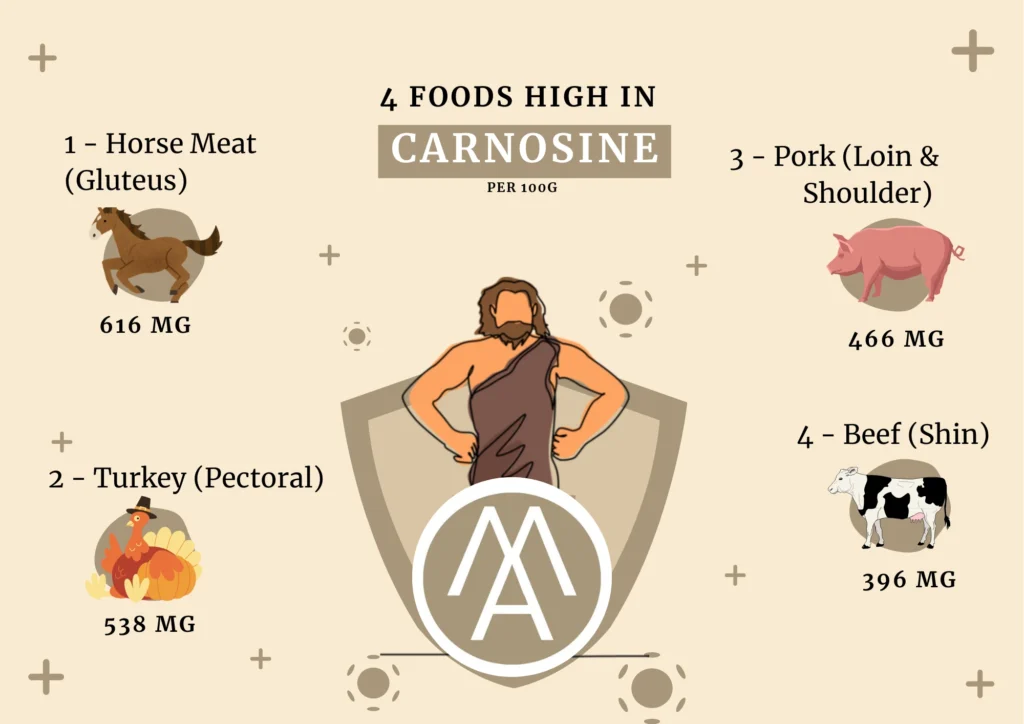
Carnosine has both a antioxidant and antiglycation action to your skin. While preventing your skin from coming in contact with harmful sugars and free radicals, it makes sure it can continue its natural processes without being distracted by those.
Antioxidants are molecules that help your body get rid of free radicals.
Taurine is an essential nutrient found in meat, fish, and eggs in particular. It has important functions in the heart and brain – it might also be beneficial to people who struggle with heart failure by lowering blood pressure and calming the nervous system.
The 5 highest taurine foods are:
Recommended is to consume 3g of taurine per day.
The last one on this list of essential nutrients found only in meat, is carnitine. Carnitine is sometimes also used as a weigh loss supplement.
Although I’m not a fan of weight loss supplements (because 99% of them are processed BS), a 2020 study review of 37 studies found that L-carnitine supplementation significantly reduced body weight, body mass index (BMI), and fat mass.
Worth trying if you’re struggling with weight loss. The body needs ±15 mg/day of carnitine per day. Excess creatine is excreted in urine.
Carnitine plays a crucial role in energy production, by transporting long-chain fatty acids into the mitochondria. By doing so, the fatty acids can be oxidized to produce energy in the form of ATP (Adenosine Triphosphate).
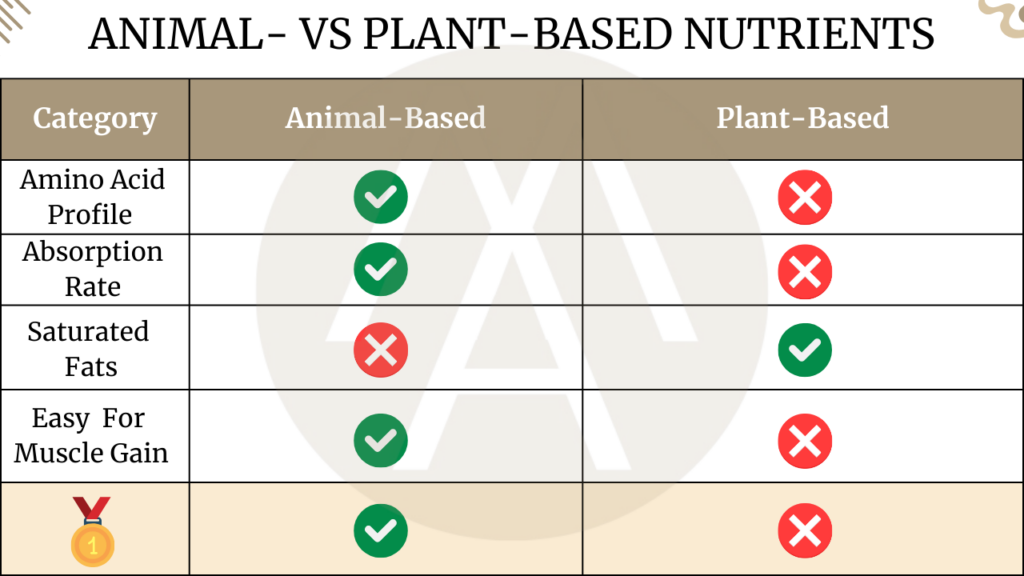
At the end of the day, almost every deficiency can be filled up with supplements in combination with a plant-based diet. So why would you even consider eating meat in the first place?
In simple terms, plants are harder to digest than meat, as plant-based foods (like nuts, fruit, and grains are coated by a fibrous layer to protect them from insects and diseases. This makes it harder for the body to digest, and therefore lowers the absorption rates.
But also, animal-based foods’ protein profile is superior to plant-based nutrition. Protein is made of amino acids (AAs). In total, there are 20 different amino acids. While animal-based food (like grass-fed beef or chicken liver) contains all of the AAs we need, plant-based protein lacks one or more.
Leucine is especially important in muscle growth and recovery after exercise.
Remember that it’s always better to get your nutrients from whole foods rather than supplements. Supplements, such as whey protein, are there as a supplement, not a replacement.
So, what are your best options when it comes to meat? If you’re familiar with the blogs I write on DDF, you know I’m a big advocate for liver, especially beef liver.
However, beef liver isn’t your ONLY option when it comes to meat; there are other great options. For example, heart, kidney, and other organ meats are also incredibly nutrient-dense.
Grass-fed beef provides a great balance of essential fatty acids and higher levels of certain vitamins, while fatty fish like salmon, mackerel, and sardines are packed with omega-3s and vitamin D.
When possible, always aim for fresh, high-quality sources of protein that contain all of the amino acids and have the least amount of saturated fats.
Meat is more than just a source of protein; it is a powerhouse of essential nutrients that are difficult, if not impossible, to obtain in significant amounts from plant-based diets. From vitamin B12 and heme iron to DHA and carnitine, these nutrients play critical roles in energy production, brain health, immune function, and overall well-being.
While supplements can fill gaps in certain cases, meat’s bioavailability and amino acid profile make it an essential component of a balanced diet. Prioritizing high-quality, nutrient-dense animal products, such as grass-fed meats and organ meats, is the best way to achieve optimal health if you ask me.
So ask yourself: how does meat fit into your approach to health? Is it just part of your diet, or is it the main component in your diet?
For those exploring or optimizing meat-inclusive diets like carnivore or keto, understanding its role becomes even more critical. Curious about how to manage cravings or prevent deficiencies on a meat-centric diet? Check out Why the Carnivore Diet Makes You Hungry: 8 Causes and Fixes to dive deeper into this topic.
Without meat in your diet, you may miss out on several essential nutrients that are either absent or present in less bioavailable forms in plant-based diets.
These include high-quality protein, heme iron (more readily absorbed than non-heme iron from plants), zinc, vitamin B12, and omega-3 fatty acids like EPA and DHA.
Meat is also a natural source of creatine, carnosine, and taurine—compounds that play critical roles in muscle function, brain health, and energy metabolism.
Two important omega-3 fatty acids, eicosapentaenoic acid (EPA) and docosahexaenoic acid (DHA) are almost exclusively found in animal products like fatty fish and red meat.
While the body can convert alpha-linolenic acid (ALA), a plant-based omega-3, into EPA and DHA, this conversion is inefficient.
Including meat or fish ensures direct access to these critical fats, which support brain health, heart function, and anti-inflammatory processes.
Vitamin B12 is found naturally only in animal-derived foods like meat, fish, eggs, and dairy. It plays an essential role in red blood cell formation, nerve function, and DNA synthesis.
Deficiency in B12 can lead to anemia, fatigue, and neurological issues, and it’s challenging to obtain adequate amounts on a plant-based diet without supplementation.
Meat is an excellent source of several key minerals, including:
By incorporating meat into your diet, you can more easily meet your daily requirements for these minerals.